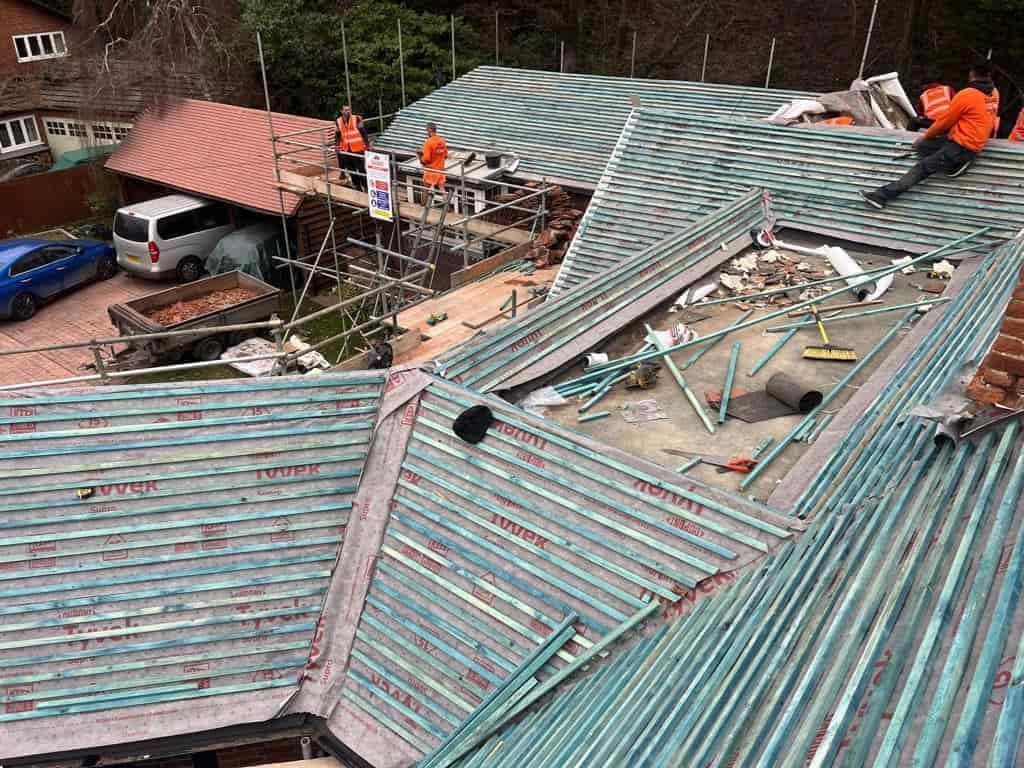Roof Safety Measures: What to Know When Dealing with Slipped Tiles
Introduction: Slipped roof tiles can be a common issue for homeowners, and while addressing this problem is essential for your roof’s integrity, safety should always be the top priority. Roof work can be hazardous, especially when dealing with heights and slippery surfaces. This blog post will discuss essential safety measures and what you should know when dealing with slipped tiles on your roof. SC Roofing in Olney emphasises safety during all roofing projects to ensure your well-being and the successful completion of repairs.
1. Assess the Situation
Before attempting any roof work, assess the situation carefully. Determine the extent of the slipped tile problem and whether it can be addressed safely by yourself or if it requires professional assistance. Consider the weather conditions and potential hazards, such as wet or icy surfaces.
2. Use Proper Safety Equipment
When working on your roof, always wear appropriate safety gear, including:
- Non-slip shoes or boots: Choose footwear with good traction to prevent slipping on the roof surface.
- Safety harness and lifeline: If you plan to access the roof, use a safety harness and secure it to a sturdy anchor point.
- Gloves: Protect your hands from sharp edges and debris by wearing gloves.
- Safety goggles: Protect your eyes from debris and potential hazards.
- Dust mask: If dust or insulation material is involved, wear a dust mask to protect your respiratory system.
3. Maintain Three Points of Contact
Always maintain three points of contact with the surface when on the roof. This means having two hands and one foot, or two feet and one hand, firmly planted on the roof at all times. This practice improves stability and reduces the risk of slipping.
4. Avoid Walking on Slipped Tiles
Avoid stepping on an area with slipped tiles if you need to access it. Slipped tiles can be unstable and might give way when stepped on. Instead, walk on adjacent, secure tiles or use a sturdy board or piece of plywood to distribute your weight evenly.
5. Work with a Buddy
Having someone else on the ground to assist you is advisable. They can help by handing you tools and materials, providing support from below, and calling for help in an emergency.
6. Be Mindful of the Roof Slope
Be aware of the roof’s slope and pitch. Working on steep roofs can be especially dangerous. If your roof has a steep pitch, consider hiring professionals like SC Roofing to ensure the job is done safely and effectively.
7. Know Your Limits
Roof work can be physically demanding and mentally challenging. Know your limits, and don’t push yourself beyond what you’re comfortable with. If you’re unsure or uncomfortable with the task, it’s best to seek professional help.
Conclusion: Dealing with slipped tiles on your roof is a necessary maintenance, but it should always be approached with safety in mind. Assess the situation, use proper safety equipment, maintain three points of contact, avoid walking on slipped tiles, work with a buddy, be mindful of the roof’s slope, and know your limits. If you’re unsure about your ability to address slipped tiles safely, don’t hesitate to contact professionals like SC Roofing in Olney. Your safety should always be the top priority when working on your roof.
Call us on: 01234 860 698
Click here to find out more about SC Roofing Olney
Click here to complete our contact form and see how we can help with your roofing needs.

